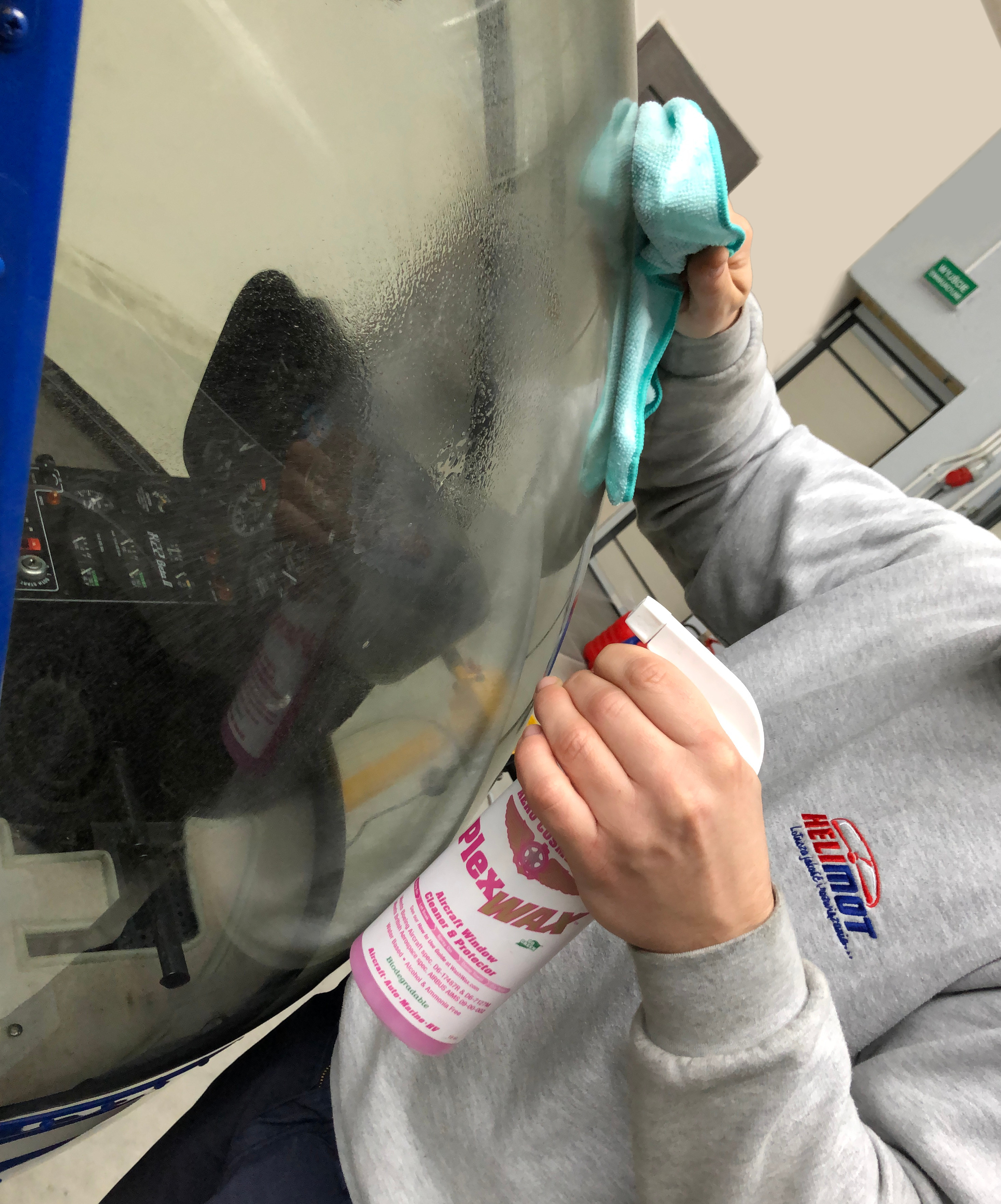Robinson Helicopter Company (RHC), the world's leading manufacturer of civilian helicopters, has received FAA...
- There are no more items in your cart
- Shipping
- Total zł0.00
Everything you need to know about vibration in a helicopter
The pilot must understand that any sudden increase in vibration will require a safe precautionary landing.
Do not attempt to extend the flight, land safely and preferably in a location where ground access will be available if necessary, so if possible do not land in the middle of a muddy field.
One potential problem for the owner/operator is that vibration levels can gradually increase over time, meaning that the pilot will become habituated to this and therefore not be able to recognise the vibration as an impending threat.
Take for example a main rotor blade that has suffered some corrosion damage.
The corrosion can lead to localised weakening which gives rise to a fatigue crack, propagating under normal cyclic flight loads.
The blade will be weaker than before, so its stiffness will be reduced, causing it to adopt a position which is different from the original position of the blade before damage while the rotor was spinning.
This will cause an imbalance in the main rotor system, warning the pilot that there is a problem (in this case a cracked main rotor blade) by increasing the vibration level.
As the crack propagates through stress cycles, the blade continues to suffer from decreasing stiffness, which increases the “unbalance” and therefore increases the vibration level.
The blade will eventually completely destroy itself and separate from the main rotor system.
We probably don’t need to explain what happens when you lose a main rotor blade..!
A pilot should never ignore what a helicopter is trying to tell us.
Any increase in vibration, whether sudden or built up over a period of time, should never be ignored.
Vibration tends to increase, so the owner/operator may be unaware of a developing problem. However, over time the vibration level will increase to a level that should become apparent to the pilot before failure occurs.
In the above example, the main rotor blade vibrations will be low-frequency, caused by a cracked blade that is in the wrong position during its rotation. This phenomenon is usually described to us as "untracked" or "unbalanced" blades.
Such complaints usually end with the aircraft visiting a mechanic for inspection and correction of the irregularities.
In this case, tracking and balancing will correct the vibration symptoms by restoring the blades to a balanced state by correcting the changes that have occurred due to the reduction in blade stiffness.
Correction will not eliminate the cause, which is the cracked main rotor blade!
When the helicopter is returned to service, the crack will continue to grow, causing further loss of blade stiffness.
The blade will once again assume a new position, causing the main rotor to be unbalanced after just a few hours.
This situation should really attract the attention of the pilot and the service center.
Such a helicopter should not be flown until the cause has been identified and corrected.
In no case should the aircraft be returned to service without a fault being found.
The cracks may be hidden or difficult to see.
If such a helicopter is returned to service without a problem being identified, the cause will likely be found when a rotating blade separates in flight!
All helicopter manufacturers have vibration limits, and maintaining vibration levels below these limits is a normal part of helicopter maintenance.
Vibration exceeding the manufacturer's limits will damage the components of your helicopter.
This is potentially very dangerous, and also costly!
The same rules should apply to any other change in the vibration level of the helicopter.
If a mechanic checks the reported vibration of the main or tail rotor with instruments designed for analysis, this can sometimes lead to error when searching for the cause of the vibration.
For example, if a pilot reports vibration through the tail rotor pedals, it is usually simply reported as vibration so the actual frequency will be unknown.
The mechanic will automatically check the tail rotor balance by setting the tail rotor RPM on the vibration analysis equipment.
However, the real problem may be the generation of a frequency other than the tail rotor hub and blade frequency.
Therefore, if it appears that the tail rotor hub and blade system are not causing the vibration, and the vibration is still visible, a full analysis should be carried out to identify the cause.
Any increase in vibration levels should require the helicopter to be declared unfit to fly until the cause is identified and repaired.
The pilot should fully understand that an increase in vibration level is a warning.
It should also be remembered that vibration can significantly increase the fatigue of other components, thus reducing their service life, which may lead to failure.
















Leave a comment